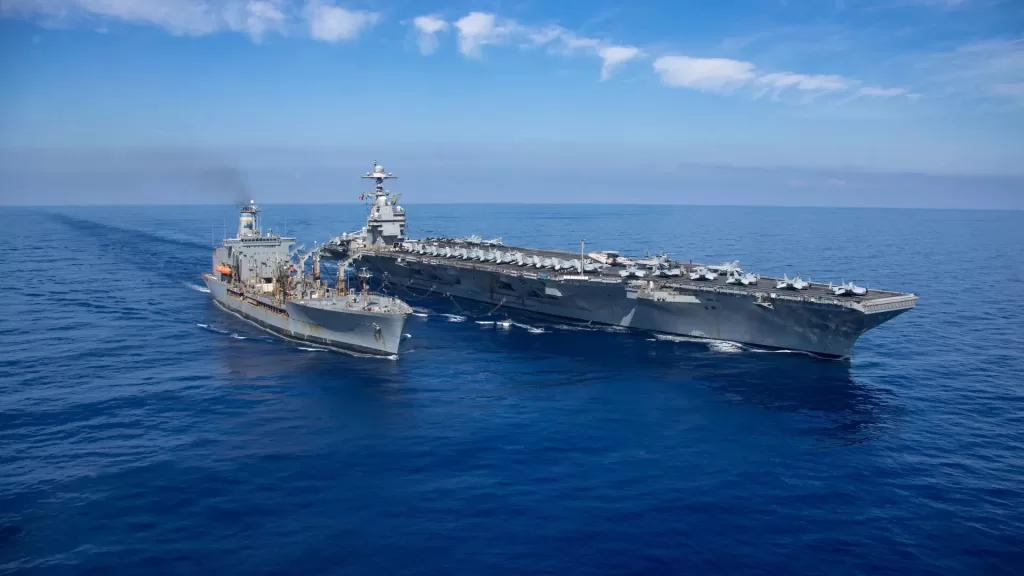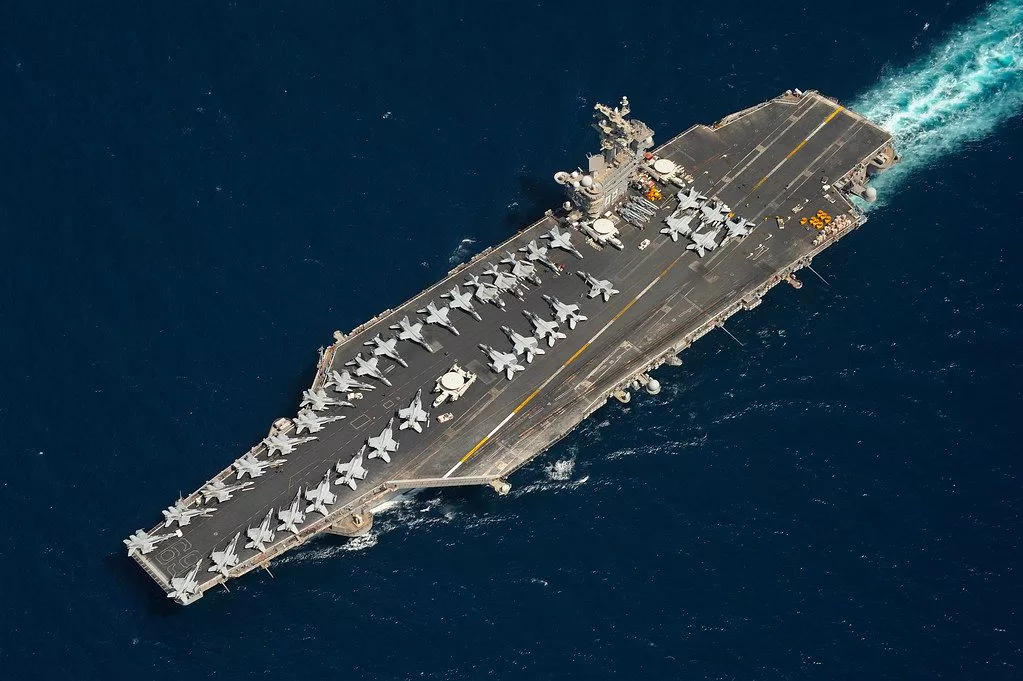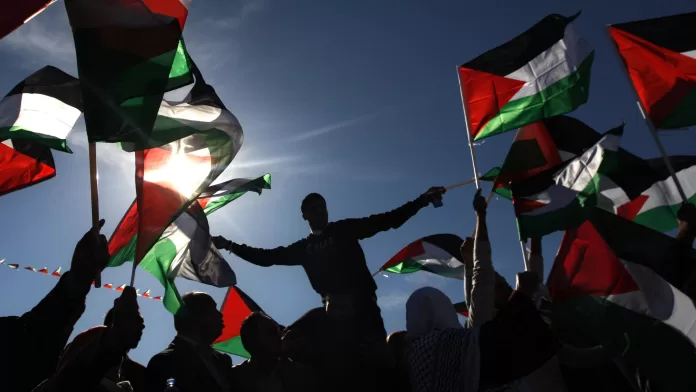Introduction
The Middle East, a crucible of perpetual change, is ensnared in conflicts stretching beyond the Israel-Gaza War. Rooted in the mid-20th century with Israel’s establishment in 1948 and mass Palestinian displacement, the region grapples with a relentless cycle of violence over land, resources, and national identity. Amid the ongoing Gaza war, Houthi rebels emerge as pivotal players, and they are also referred to as Ansarullah (Party of God) whose influence extends beyond Yemen. Seizing Sanaa in 2014, they instigated a protracted conflict with a Saudi-backed coalition, plunging Yemen into a dire humanitarian crisis. Alleged ties to Iran amplify regional tensions, with the rebels strategically targeting the Red Sea, disrupting global maritime trade and setting the stage for a complex geopolitical challenge. This is all because Houthi rebels are attempting all activities in solidarity with Palestinians.
The Houthi Gambit Strangling International Trade
The Houthi rebels, backed by Iran, have not merely declared direct war on their regional adversary Israel but have also strangled international trade by targeting commercial vessels. Their actions, involving boarding, missile attacks, and drone deployments, have effectively halted shipments through the Suez Canal and the Red Sea. At its narrowest point, the Bab el Mandeb Strait is about 29 km wide, and that is where the raids have taken place. The ripple effect is felt globally, impacting the world’s largest container shipping companies and prompting a rethink of global supply chains.
Naval Dynamics the Slow Reactions and Strategic Maneuvers
As the Houthi blockade tightens its grip, the major power navies have been slow to react except the US Navy (USN) and UK Navy (Royal Navy). In response, the US has deployed a carrier strike group from the Persian Gulf to the Gulf of Aden, simultaneously forming a 10-country naval task force to safeguard shipping. Addition to all that the United States and the United Kingdom began the strikes against military sites used by Houthi rebels to antagonize the global shipping industry in the Red Sea, raising fears of further escalation of the simmering conflict in the Middle East over Israel’s war in Gaza.
Red Sea – where Geopolitics Meets Economics
The Red Sea emerges as the epicenter of this geopolitical storm, where the confluence of geography, economics, technology, and politics converges. Egypt faces economic challenges, Iran seeks new leverage, Saudi Arabia maintains a ceasefire with the Houthis, China watches the US Navy’s stretched resources, and the UAE aims to escalate without dirtying its hands. The Houthi rebels declaring American ships as targets, add a volatile element to this already intricate scenario.
The Maritime Chessboard: Houthi Attacks and Global Repercussions
The Houthi rebels have transformed the Red Sea into a maritime battleground. Directly targeting commercial vessels and firing over 100 drones and missiles, they claim solidarity with the Palestinians while strategically using the maritime blockade as leverage against America and Israel. This dynamic reveals the extent of Iran’s power projection in the region and the intricate moves in the geopolitical chessboard.
“Conflict of Nations is a huge game, taking weeks for a game round to complete, making logistics as necessary as tactics. The key to victory is to think ahead and build alliances.”
Economic Fallout, Disrupted Trade Routes and Global Supply Chains
The repercussions of the Houthi blockade extend far beyond the region, with four of the world’s largest container shipping companies halting operations in the Red Sea. These include Denmark’s Maersk, France’s CMA CGM, Germany’s Hapag-Lloyd, and Switzerland’s MSC. Together, these companies account for more than 50% of global container shipping capacity. Another Multinational British Petroleum company BP p.l.c. (formerly The British Petroleum Company p.l.c. and BP Amoco p.l.c.; stylized bp) is a British multinational oil and gas company is also stopping shipments through the Red Sea. If other energy firms join the call, oil and gas supplies could be in severe trouble.
For the global economy to prosper, trade must go uninterrupted. Around 80% of international trade goes by sea, and ships must reach their ports as expeditiously and as cost-effectively as possible. However, ships are most vulnerable when passing through narrow passages. The Red Sea is one such passage, defined by two chokepoints the Suez Canal to the North and the Bab el Mandeb Strait to the South. Denying safe passage through this crucial route impacts 20% of global container traffic, 10% of maritime oil, and 8% of liquefied natural gas. The economic fallout is immense, with ships rerouting around the Cape of Good Hope, which had been largely obsolete since the opening of the Suez Canal more than 50 years ago. However, this detour adds about 7,400 km and up to 14 days of travel time to the journey, costing millions of dollars in extra fuel and other insurance and auxiliary costs.

Naval Task Force Dilemma and the Fragility of International Commitments
Since the start of the crisis, the US Navy has moved the Dwight D. Eisenhower-led aircraft carrier and its task force into the Gulf of Aden. The US-led naval task force, Operation Prosperity Guardian, seeks to reassure shipping companies and deter Houthi attacks. However, universal commitment to this operation is brittle. Britain has agreed to deploy ships, but France, Italy, and Spain have rejected the operation. Egypt, Saudi Arabia, and the United Arab Emirates are also notably absent and China with warships in its base in Djibouti, is not part of the coalition either. What is left is not much of a task force. Each party has its own motives for rejecting the US-led operation. One of the reasons is the cost. Western naval forces use highly expensive equipment to fend off cheap drones. The French recently fired an Aster 15 surface-to-air missile worth more than $1 million to shoot down a Shahed-type drone costing barely $20,000. That is not a sustainable way of combat. When you employ a million-dollar weapon to kill a budget drone, it’s really the budget drone that makes the kill.

Conclusion
In my opinion, the current scenario leans toward war and wider conflicts in the region, posing significant challenges for both regional players and the international community. To counter this, a shared international consensus becomes imperative. Additionally, resolving the Israel-Palestine (Gaza) conflict through a two-state solution, achieving a ceasefire, and putting an end to the ongoing humanitarian crisis in Gaza is essential.
I firmly believe that the international community and major powers bear the responsibility of finding a solution that includes stopping Israel from perpetuating acts of genocide against Palestinians and recognizing their sovereignty.
Failure to find a comprehensive solution for Red Sea could have consequences that extend far beyond the region’s borders. A widening war in the Middle East would not only exacerbate the suffering of the people directly involved but also have a profound impact on international trade and the global economy.
The urgent need for diplomacy, cooperation, and a commitment to lasting peace has never been more apparent, as the delicate balance between stability and unpredictable conflicts in the Red Sea region hangs in the balance.




